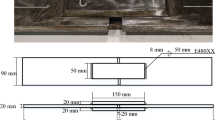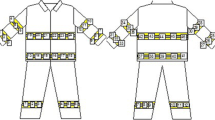Abstract
The tools and equipment that firefighters carry on the fireground must be able to perform in the thermal conditions for which they may be deployed and utilized. Escape rope systems, which may be utilized by firefighters requiring emergency escape from an elevated position due to rapidly evolving fire conditions, are potentially life critical pieces of equipment. However, until recently traditional standardized tests required that the material properties of the rope only be evaluated at room temperature. In this study, traditional materials testing instruments were modified to quantify the capability of firefighter escape ropes to perform in the thermal conditions for which they may be deployed and utilized. These instruments have shown that at temperatures as low as 100°C, the strength of each rope was significantly reduced and at temperatures as low as 300°C, even the all aramid rope strength reduced by more than 50 %. Furthermore, this study has provided the first means of reliably and repeatably determining the available safe on-rope time. For temperature conditions comparable to those in typical structure fires, where the compartment of egress has flashed over, even the strongest ropes with the highest temperature resistance can only be expected to provide a maximum of 90 s of protection prior to failure. Pilot testing with a protective sheath concept has demonstrated a promising potential for improvement in performance.









Similar content being viewed by others

References
NFPA (2006) NFPA 1983: standard on life safety rope and equipment for emergency services, 2006 edn. National Fire Protection Association, Quincy.
Firefighter’s handbook: essentials of firefighting and emergency response, 2nd edn. Delmar Thomson Learning, Clifton Park (2004).
Watson P (1993) Selecting lifesaving rope. Fire Eng 146(9):14–16.
Sterling Rope Company, “Personal Escape Rope” http://www.sterlingrope.com/product/456557/F075AA/_/FireTech. Accessed 20 Nov 2013.
New England Ropes, “Safety & Rescue”: http://www.neropes.com/product.aspx?mid=4B6A3094468D3DB4355B5DBAEA28F6FB&lid=4&pid=174. Accessed 20 Nov 2013.
Greiff JS (2001) Performance tests of personal escape rope systems. Fire Eng. 154 (5):45–60.
NFPA (2012) NFPA 1983: standard on life safety rope and equipment for emergency services, 2012 edn. National Fire Protection Association, Quincy.
Fontenot N, Stenvers D, Gilmore J, Solomon A, van Berkel B, Grabandt O, Kong D (2009) Use of synthetic rope in high-temperature or fire environments, MTS/IEEE Biloxi—marine technology for our future: global and local challenges, OCEANS 2009, art. No. 5422343.
Mensch AE, Braga GGCB, Bryner NP (2011) Fire exposures of fire fighter self-contained breathing apparatus facepiece lenses, NIST TN-1724. http://www.nist.gov/customcf/get_pdf.cfm?pub_id=909917. Accessed 20 Nov 2013.
Kerber S (2012) Analysis of one and two-story single family home fire dynamics and the impact of firefighter horizontal ventilation. Fire Technol. doi:10.1007/s10694-012-0294-5 or http://ulfirefightersafety.com/wp-content/uploads/2013/06/UL-FSRI-2010-DHS-Report_Comp.pdf. Accessed 20 Nov 2013.
ASTM International (2012) ASTM I119-12a: standard test method for fire tests of building construction and materials. ASTM, West Conshohocken, PA.
The Cordage Institute (2007). CI 1801: low stretch/static kernmantle safety rope. Cordage Institute, Wayne, PA.
Obstalecki M, Chaussidon J, Kurath P, Horn GP (2011) Prediction of dynamic forces in fire service escape scenarios. Conf Proc Soc Exp Mech Ser 1:179–186.
Acknowledgments
The funding for this research was provided by the Department of Homeland Security’s Assistance to Firefighters Grant Program’s Fire Prevention and Safety Grants through Grant No. EMW-2008-FP-02504. The authors thank Bev Stutts and Joe Waters of UL LLC for their assistance with servo-hydraulic testing.
Author information
Authors and Affiliations
Corresponding author
Rights and permissions
About this article
Cite this article
Horn, G.P., Chaussidon, J., Obstalecki, M. et al. Evaluating Fire Service Escape Ropes at Elevated Temperatures and Fire Conditions. Fire Technol 51, 153–171 (2015). https://doi.org/10.1007/s10694-013-0373-2
Received:
Accepted:
Published:
Issue Date:
DOI: https://doi.org/10.1007/s10694-013-0373-2



